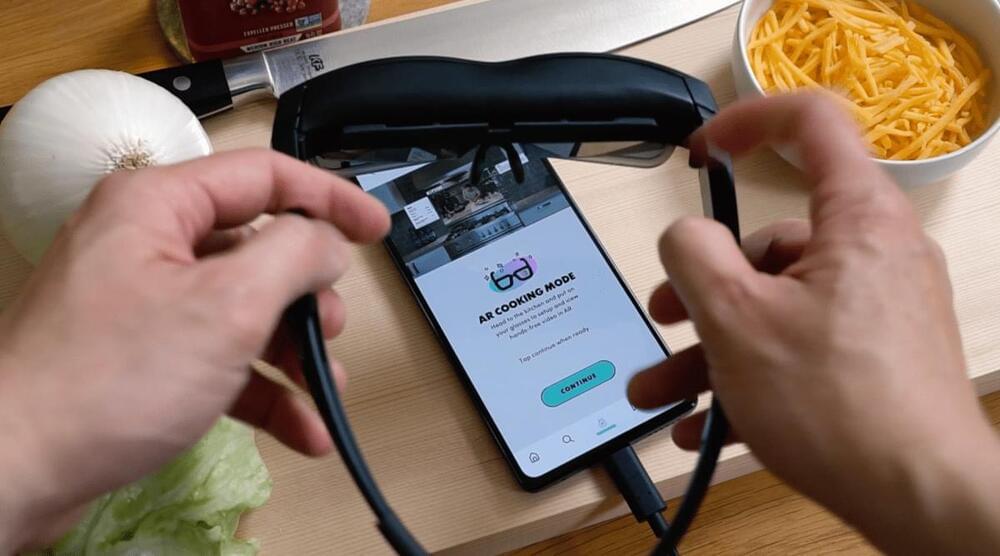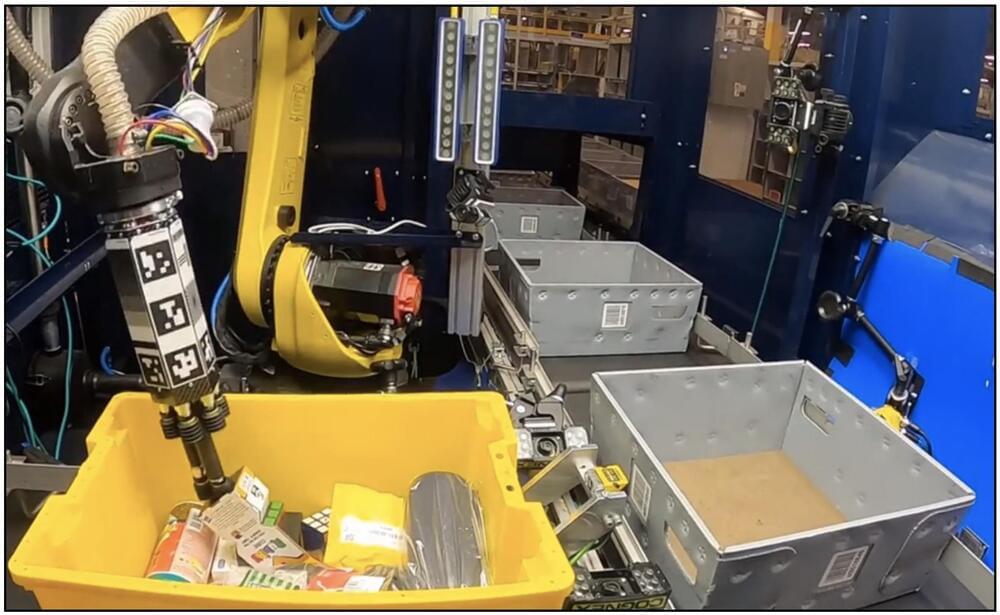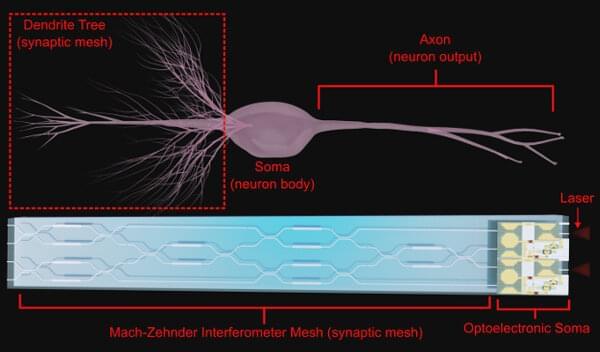Please make sure your browser supports JavaScript and cookies and that you are not blocking them from loading. For more information you can review our Terms of Service and Cookie Policy.




Why wear beer goggles when you can wear bing goggles?
Well, now you can, at least if you’re using Kittch’s new AR cooking mode to make chef Ming Tsai’s MingBings. Today Kittch, a culinary video community, announced they have teamed up with Qualcomm to integrate AR features into their cooking app, according to an announcement sent to The Spoon. The collaboration, done in partnership with technical design company Trigger, is being demoed this week at Augmented World Expo (AWE) in Santa Clara, California.
Kittch app users can access the Kittch AR cooking mode by plugging in AR glasses to a mobile phone and clicking the “view in kitchen” button. From there, users can follow interactive videos and recipes, set timers, and order ingredients via AR gesture control. The new feature was demoed by Ming Tsai and his MingBing recipe here.

In an effort to improve the performance of robots that pick, sort, and pack products in warehouses, Amazon has publicly released the largest dataset of images captured in an industrial product-sorting setting. Where the largest previous dataset of industrial images featured on the order of 100 objects, the Amazon dataset, called ARMBench, features more than 190,000 objects. As such, it could be used to train “pick and place” robots that are better able to generalize to new products and contexts.
We describe ARMBench in a paper we will present later this spring at the International Conference on Robotics and Automation (ICRA).
The scenario in which the ARMBench images were collected involves a robotic arm that must retrieve a single item from a bin full of items and transfer it to a tray on a conveyor belt. The variety of objects and their configurations and interactions in the context of the robotic system make this a uniquely challenging task.
Surprisingly, the human studies consistently show that collagen supplements reverse the signs of skin aging.
💊 My full supplement stack: https://drstanfield.com/my-supplements.
💊 Supplements I source from Amazon: http://amzn.to/3o2ULOV
✨15% Discount Code: BRAD ✨
• ProHealth: https://www.prohealth.com/collections/best-sellers.
✨10% Discount Code: BRAD ✨
• DoNotAge.org: https://donotage.org/products/
• Renue By Science: https://renuebyscience.com/?rfsn=5206061.b626e7&coupon-code=brad.
🔍 The largest database of nutrition and supplement research:
https://examine.com/refer/drstanfield.
Donate towards my Rapamycin & Exercise clinical study: https://bit.ly/3QwugRx.

For years, we’ve debated the benefits of artificial intelligence (AI) for society, but it wasn’t until now that people can finally see its daily impact. But why now? What changed that’s made AI in 2023 substantially more impactful than before?
First, consumer exposure to emerging AI innovations has elevated the subject, increasing acceptance. From songwriting and composing images in ways previously only imagined to writing college-level papers, generative AI has made its way into our everyday lives. Second, we’ve also reached a tipping point in the maturity curve for AI innovations in the enterprise—and in the cybersecurity industry, this advancement can’t come fast enough.

Perfect recall, computational wizardry and rapier wit: That’s the brain we all want, but how does one design such a brain? The real thing is comprised of ~80 billion neurons that coordinate with one another through tens of thousands of connections in the form of synapses. The human brain has no centralized processor, the way a standard laptop does.
Instead, many calculations are run in parallel, and outcomes are compared. While the operating principles of the human brain are not fully understood, existing mathematical algorithms can be used to rework deep learning principles into systems more like a human brain would. This brain-inspired computing paradigm—spiking neural networks (SNN)—provides a computing architecture well-aligned with the potential advantages of systems using both optical and electronic components.
In SNNs, information is processed in the form of spikes or action potentials, which are the electrical impulses that occur in real neurons when they fire. One of their key features is that they use asynchronous processing, meaning that spikes are processed as they occur in time, rather than being processed in a batch like in traditional neural networks. This allows SNNs to react quickly to changes in their inputs, and to perform certain types of computations more efficiently than traditional neural networks.

Apple is overtly teasing the start of “a new era” and the ability to “code new worlds” at WWDC this year, building anticipation around the widely expected announcement of its mixed-reality headset.
A tweet shared by Apple earlier today made the “new era” remark, seemingly leaning into the high expectations surrounding next week’s WWDC keynote. The launch of a major new device and operating system, something that has not occurred since the debut of the original Apple Watch in September 2014, would certainly seem to justify the start of a new era for the company.

Winsight is a leading B2B information services company focused on the food and beverage industry, providing insight and market intelligence to business leaders in every channel consumers buy food and beverage – convenience stores, grocery retailing, restaurants and noncommercial foodservice – through media, events, data products, advisory services, and trade shows.
Copyright © Winsight, LLC.
